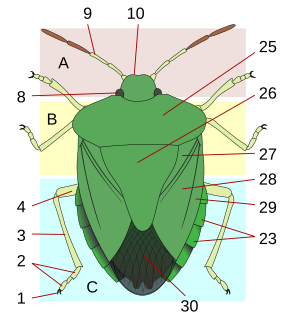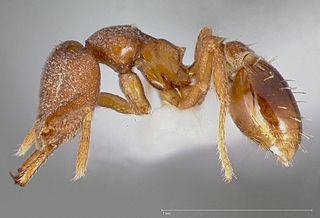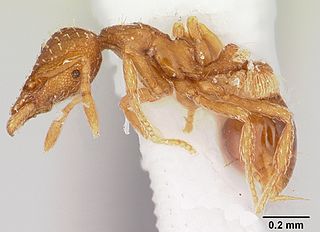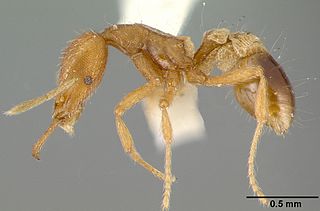| Strumigenys hispida | |
|---|---|
| Scientific classification | |
| Kingdom: | Animalia |
| Phylum: | Arthropoda |
| Class: | Insecta |
| Order: | Hymenoptera |
| Family: | Formicidae |
| Subfamily: | Myrmicinae |
| Genus: | Strumigenys |
| Species: | S. hispida |
| Binomial name | |
| Strumigenys hispida Lin & Wu, 1996 | |
Strumigenys hispida is a species of yellow ant up to 3 mm in length. It is endemic to Taiwan. [1]

Ants are eusocial insects of the family Formicidae and, along with the related wasps and bees, belong to the order Hymenoptera. Ants evolved from wasp-like ancestors in the Cretaceous period, about 140 million years ago, and diversified after the rise of flowering plants. More than 12,500 of an estimated total of 22,000 species have been classified. They are easily identified by their elbowed antennae and the distinctive node-like structure that forms their slender waists.

Endemism is the ecological state of a species being unique to a defined geographic location, such as an island, nation, country or other defined zone, or habitat type; organisms that are indigenous to a place are not endemic to it if they are also found elsewhere. The extreme opposite of endemism is cosmopolitan distribution. An alternative term for a species that is endemic is precinctive, which applies to species that are restricted to a defined geographical area.

Taiwan, officially the Republic of China (ROC), is a state in East Asia. Neighbouring states include the People's Republic of China (PRC) to the west, Japan to the northeast, and the Philippines to the south. Taiwan is the most populous state and largest economy that is not a member of the United Nations (UN).
This ant is very similar to Strumigenys solifontis but there are several distinguishing features including much more prominent lamellae on the propodeum, and thorax with a flatter upper profile. [1]
The propodeum or propodium is the first abdominal segment in Apocrita Hymenoptera. It is fused with the thorax to form the mesosoma. It is a single large sclerite, not subdivided, and bears a pair of spiracles. It is strongly constricted posteriorly to form the articulation of the petiole, and gives apocritans their distinctive shape.

The thorax is the midsection (tagma) of the insect body. It holds the head, legs, wings and abdomen. It is also called mesosoma in other arthropods.






